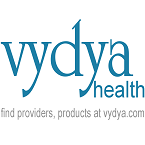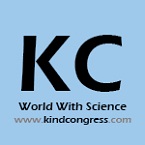Previous Speakers

Hiroshi Ohrui
Yokohama University of Pharmacy, Japan Japan

Dr Philip Norrie
Conjoint Senior Lecturer, University of New South Wales, Sydney, Australia Australia

Jia-Ching Shieh
Chung Shan Medical University, Taiwan Taiwan

Rosie D. Lyles
Medline Industries, Inc,USA USA

Tian-Hua Huang
Shantou University Medical College, China China

Dr. Magdalena Radwanska
University Libre de Bruxelles, Belgium Belgium

Sunil Palchaudhuri
Wayne State University, USA USA

Valeria Vanegas Segura
Los Andes University Colombia
Recommended Global Infectious Diseases Webinars & Conferences
Europe & UK
Asia Pacific & Middle East
Canada
Infectious Meet 2023
About conference
World Congress on Infectious meet invites all the participants across the globe to attend and share their insights and convey recent development technologies and methodologies on 6th Global Experts Meeting on Infectious Diseases based on the theme “ Infectious Disease is an Era of Global Change” which will be held during August 07-08, 2023 Singapore City, Singapore We are pleased to welcome all Virologists, Scientists, Delegates, Speakers, dermatologists, pulmonologist, and primary health care doctors for infectious meet to attend the conference.
Today, there are over seven billion people on the planet, and whether directly or indirectly through global pollution and climate changes, our actions have an effect on every aspect of it. This conference is how anthropogenic environmental changes negatively affect human health by increasing the dangers of infectious diseases, natural disasters, food and water scarcity, as well as natural disasters and population migration. In the case of infectious diseases perceived as tropical, like malaria, socioeconomic variables may be substantially more crucial than climate. The effects of illness may also include a vicious cycle in which the diseases worsen poverty, which makes the poor more susceptible to illnesses. Particularly arboviruses tend to disproportionately affect the impoverished and may cost both families and societies in the form of long-lasting aftereffects. Numerous illnesses can also be fatal right away, which causes people without access to medical care to become sick during the viral or parasite phases, increasing their susceptibility to further bites from vectors and increasing the rate of infection in the vectors.
Scope and Importance:
The goal of the Infectious Meet 2023 is to learn about new developments in infectious and contagious diseases, study early detection and treatment care based on professional standards, and conduct extensive research to fully treat various infections. The Conference will provide academics and professionals from a variety of disciplines with a forum to discuss societal change that is affected by innovation and technology.
Who can attend?
INFECTIOUS MEET 2023 brings together people with a variety of interests in the disciplines of infectious and contagious faculties and associations, as well as immunologists, biotechnologists, and health-care professionals. It serves as a venue for exchanging ideas, facts, and knowledge about topics of common interest.
Target Audience:
- Researchers and Students
- Virologists
- Academicians
- Immunologists
- Practitioners
- dermatologists
- Pharmaceutical Experts
- Pulmonologists
- primary health care doctors
Sessions and Tracks
Track 1: Scope of infectious diseases
As a result of considerable advancements in the creation of anti-microbial medications for the treatment of life-threatening, surgical, and trauma-related infections, infections should have grown as strength in the late twentieth century. The industrialized world benefited from the advancement of chemotherapeutic agents, the expansion of open healthcare practices, and profound discoveries in the fields of microbiology and immunology, all of which led to a notable reduction in the frequency of mortality and morbidity due to infectious diseases, particularly in the years after WWII.
- Bacterial Infections
- Fungal Infections
- Parasitic Infections
Track 2: Epidemiology & Transmission
Direct transmission of infections depends on the frequency of contact between susceptible and infectious individuals, and as a result, on population density and population mixing. As in the case of rabies, direct zoonotic disease transmission necessitates contact between animal hosts and people, but transmission can also go both ways. The danger of transmission from livestock or pets to their owners rises due to close contact, and the rising trade associated with exotic pet demand raises the risk of the introduction of new infections. Pathogens that are found in food and water are the main cause of the billions of instances of diarrhoea that happen each year. Increases in food-borne transmission may be a result of the challenges associated with treating animal waste safely, as several zoonotic pathogens may originate from this. This is a challenge for industrialized systems as well as small-scale farms where there may be no manure management methods at all due to the large volume of manure produced each day. Future water pollution and water shortages may also raise the likelihood that food safety will decline.
Track 3: Diseases caused by virus
Many infections result in absolutely no sickness or injury. However, certain diseases can assault particular cells and spread like wildfire inside of them. As soon as they reach maturity, the daughter viruses rupture the cell and propagate elsewhere. It is known as a lytic infection. In the event that the host's protection is successful, the virus-infected cell may eventually be destroyed by the host, causing the infection cycle to be triggered and the illness to be treated. However, this is not often true of all viral infections. The cell might become a carrier for the viruses if they are able to survive inside of it without harming it. Although the illness may seem to be gone, it still exists and can still transmit to other people.
Track 4: Infection and cancer
Most human tumors, 20% of them, are assumed to be caused by infections. This explains why the contribution of bacteria to the development of cancer has been largely underappreciated. Although epidemiological evidence ties some malignancies to bacterial infections, the genesis of tumours is typically believed to be entirely a result of the inflammatory reactions that ensue. Many bacteria do, however, directly impact their host cell at various times during the infection cycle. A host cell's integrity may be compromised by such modifications, which can also aid in the growth of cancer. In this study, we demonstrate how bacteria's surface components, protein toxins, and effector proteins may damage DNA in host cells while interfering with crucial host cell signalling pathways, such as cell division, proliferation, apoptosis, and immunological signaling. Hepatocellular carcinoma and hepatitis B and C infections are linked.
Track 5: Clinical Infectious Diseases
Clinical studies on the pathophysiology, clinical assessment, restorative microbiology, conclusion, resistant tools, and therapy of illnesses brought on by unstoppable specialists. It includes articles on HIV/AIDS, bioterrorism, emerging illnesses, food security, and antimicrobial resistance. It also includes articles on antimicrobial resistance.
Track 6: Vaccines
A vaccination is a biological treatment that offers active acquired immunity against a specific infectious or cancerous illness. Numerous studies and independent reports have shown the efficacy of vaccinations. An agent that mimics disease-causing bacteria is generally found in vaccines, and this agent is frequently created from the microbe's toxins, weakened or deceased versions, or one of its surface proteins. The substance induces the immune system to identify the substance as a threat, eliminate it, and then identify and eliminate any subsequent bacteria that may be connected with the substance. Inactivated, dead, or attenuated organisms or purified compounds produced from them are frequently found in vaccines. Vaccinations come in a variety of forms. These illustrate several approaches that have been utilized to lower the chance of getting sick while maintaining the potential to trigger a good immunological response.
Track 7: Infections with immunodeficiencies
Immunodeficiency’s brought on by irresistible specialists can result through disruption of normal immune system defenses or from cellular resistance regulation, both of which can aid the irresistible specialised in surviving by thwarting immunity. Such contaminations may be followed by fresh contaminations with various microorganisms. The traditional compelling causes of immunodeficiency in companion animals are immunodeficiency retroviruses, such as cat leukemia and cat immunodeficiency infections. Other significant causes include Leishmania, canine distemper, canine parvovirus 2, cat irresistible peritonitis, rickettsia live organisms that contaminate leukocytes, and infectious bacteria like Cryptococcus. These infections, which are usually spread through sexual contact or other forms of skin-to-skin contact, have been studied in great detail thanks to extensive research into the viruses' components. Antibodies can aid in preventing infection.
Track 8: Tuberculosis
Mycobacterium tuberculosis (MTB) germs are often the source of the deadly disease known as tuberculosis (TB). Although it typically affects the lungs, tuberculosis can also have an impact on other bodily regions. Latent TB refers to the majority of illnesses that don't manifest any symptoms. Roughly 10% of latent diseases progress to active disease, which if left untreated kills about 50% of individuals who are affected. Chronic hacking with blood-containing mucus, fever, nocturnal sweats, and weight loss are typical signs of active TB. Due to the weight loss caused by the virus, it was previously referred to as consumption. A broad variety of symptoms can result from infection in other organs.
Track 9: Herpes simplex virus
Genital and oral herpes are both diseases caused by the herpes simplex virus, or HSV for short. Many individuals have HSV that is asymptomatic, meaning they carry the virus but have never experienced an active episode or an outbreak of herpes. Others may frequently see little blisters or sores filled with fluid. Blisters often develop on the body's more intimate areas, such as the mouth and lips, but they can also develop on the hands, fingers, and other body parts. HSV may spread sexually, but there are other ways it can do so as well. Despite the stigma surrounding herpes, it's actually extremely common and nothing to be embarrassed of.
Track 10: Food pathology
Foodborne sickness or foodborne disease refers to any ailment brought on by ingesting foods or drinks contaminated with infectious or non-infectious germs. The most typical causes of foodborne disease include bacteria, viruses, and parasites. Other contaminants include metals like lead, mercury, and cadmium that can contaminate food through air, water, or soil pollution; organic pollutants like dioxin and polychlorinated biphenyls (PCBs), which are byproducts of some industrial processes; and prions, which are infectious diseases. Other contaminants also include mycotoxins (fungal toxins), marine bio toxins, and the toxins found in poisonous mushrooms (abnormal forms of normally harmless proteins).
Track 11: Diarrheal diseases
Diarrhoea is defined as passing three or more loose or watery stools per day (or more frequent passage than is normal for the individual). Regular passing of formed faeces, as well as the loose, "pasty" passing of stools by breastfed infants, are not indicative of diarrhoea. Diarrhea is a sign of an intestinal infection that can be brought on by a number of different bacteria, viruses, and parasites. Because of inadequate hygiene, tainted food or water, or both, infection can spread from one person to another.
Track 12: Antimicrobial drugs
An antimicrobial is an agent that kills bacteria or inhibits their growth. Antimicrobial medications can be grouped according to the germs they mostly combat. Antifungals are used against organisms, whereas anti-microbial are used against tiny organisms. They may also be categorized in accordance with their job. Microbicides are operators that kill organisms, whereas bacteriostatic operators just suppress an organism's growth. Antimicrobial chemotherapy is the term for the use of antimicrobial drugs to treat contamination, whereas antimicrobial prophylaxis is the term for the use of antimicrobial drugs to prevent contamination..
Track 13: Molecular diagnosis of infectious diseases
New rapid molecular diagnostic tools for infectious illnesses allow for quicker and more precise microbiological diagnostics. Contrarily, diagnostic and antimicrobial control are necessary to make sure that these technologies have the best potential impact on patient care and don't use up more healthcare resources. Diagnostic management is necessary to execute relevant tests for the clinical context and to steer testing toward the proper patients. In order to send the findings of diagnostic tests to the laboratory more quickly, antimicrobial care must be taken to give early and appropriate therapeutic therapy.
Track 14: Covid-19
Coronavirus 2019 (COVID-19) should be a contagious illness brought on by coronavirus 2, a severe acute respiratory ailment (SARS-CoV-2). Wuhan, China, recorded the discovery of the first known case in December 2019. Since then, the disease has spread around the world, resulting in an ongoing epidemic. The signs and symptoms of COVID 19 might vary, but they frequently include fever, hacking cough, migraine, weakness, difficulty breathing, bad taste, and bad odor. One to fourteen days after the virus was first introduced, side symptoms might appear. A third or less of those who are infected doesn’t exhibit any observable symptoms. Most (81%) patients who produce side effects that are noticeable enough to classify them as patients also produce mild to direct indications (pneumonia).
Track 15: lsocial behavior on infectious diseases
Infectious illness epidemic patterns are determined by human behaviour. The reason broad behavioral interventions (BIs) are successful strategies in epidemic management is due to this underlying link. As a general approach to avoiding new infections, BIs aim to reduce interactions and behaviors that facilitate the spread of pathogens. Despite this, there is still a lot we don't know about how behaviour and infectious illnesses interact.
Market Analysis
Infectious illness prevalence has recently increased, which the world must now accept. They are by far the worst crimes in the world, causing more than 64% of all fatalities. The number of fatalities from infectious illnesses might increase by 18% in the upcoming years if nothing is done to reverse this trend. The Organization claims that via nationwide efforts, millions of lives might be saved and healthcare costs significantly decreased.
Globally, diseases therapeutics is predicted to grow at a CAGR of 4.1%. The top eight markets are Germany, France, Italy, Spain, Japan, the United Kingdom, and the United States. Infectious diseases have grown to be a significant health issue. Adults (50%), or roughly 84 million people, have been infected from 2019 until the present. The most frequent cause of unhealthy conditions is infectious. Numerous people are afflicted with infections, and more than 23 million claim that unsanitary conditions are a problem for them. The market for autoimmune disease therapies in Europe is anticipated to generate up to USD 4.58 billion by 2020, with a CAGR of 1.6%. However, at a CAGR of 3.80%, the market for treating autoimmune illnesses is anticipated to grow to $15.97 billion by 2022.

Infectious disease diagnostic market research despite the fact that a large number of illnesses connected to healthcare are preventable, healthcare personnel don't always use proven preventative measures. The use of marketing technology may help to increase patient security. The fundamentals of marketing are discussed in this article, as well as how they may be used to promote infection control best practices. To alter behaviour, one should consider the marketing mix (Product, Price, Place, and Promotion). The method may lose its moral component and become more effective by focusing on the alleged "earnings" for healthcare personnel. Social marketing strategies are used for infection management and prevention by Vigi Germe, a non-commercial registered brand.
Scope
In the new bio-economy, infectious and contagious diseases play a significant role in creating major global challenges, upgrading waste streams into valuable food ingredients, combating lifestyle diseases and antibiotic resistance through the gut micro biota, increasing crop plants' resistance to the harshest climatic conditions, and serving as a source of new biological drugs for disease treatments.
Past conference
Conference Series takes the immense Pleasure to invite participants from all over the world to attend the "5th Global Experts Meeting on Infectious Diseases (Infectious Diseases Meet 2022)”, to be held in Singapore City, Singapore during August 08-09,2022. Infectious Diseases Meet 2022 program focuses on “Research Reformulate: Latest Prognosis in Infectious Diseases”. In collaboration with its Editorial Board Members along with institutional partners the Infectious Diseases Meet 2022 includes various people presenting their research in the form of Keynote speeches, Oral Presentations, Video presentations, Symposia, Workshops, Poster Presentations, E-Posters and Exhibitions covering a range of topics and important issues which may be helpful for us all from the research to the practical implementations.
Why to attend Infectious Diseases Conference?
The Infectious Diseases Meet will act as a platform for Infectious Diseases Specialist, Infectious Diseases Researchers, Scientists, Faculties, Students, Business professionals, Healthcare professionals, clinicians, researchers, academicians, foundation leaders, Infectious Diseases Associations and Societies, direct service providers, policymakers, Medical Colleges, Pharmaceutical Companies and Industries, Medical Devices Manufacturing Companies, Drug Manufacturing Companies and Industries and others related to this topic to exchange and discuss their valuable views on tracking the Infectious Diseases related concepts.
Infectious Diseases Meet 2022 encourages various methods in the study of large disease burden and highlighting existing opportunities in the field of Public health, Infectious Diseases, Microbiology, Neglected Tropical Diseases, Parasitology, Epidemiology and most importantly concerning Infectious Diseases, Pediatric Infectious Diseases. Global Infectious Diseases Conferences provides the time to collaborate with industry peers and discover knowledge and resources that can be used to achieve your personal and organizational goals.
To Collaborate Scientific Professionals around the World
Conference Date August 07-08, 2023
For Sponsors & Exhibitors
Speaker Opportunity
Useful Links
Past Conference Report
Supported By
All accepted abstracts will be published in respective Conference Series International Journals.
Abstracts will be provided with Digital Object Identifier by












